Jack Green, PhD, Associate Director of ACOR and Project Director of the Temple of the Winged Lions Cultural Resource Management (TWLCRM) Initiative writes about the recent efforts in site presentation and interpretation at the Temple of the Winged Lions.
The Temple of the Winged Lions (TWL) in the World Heritage Site of Petra is a Nabataean temple and complex constructed in the early 1st century AD and destroyed in the earthquake of AD 363. First excavated by Phillip Hammond from the 1970s to the early 2000s as part of the American Expedition to Petra, ACOR got involved with the Temple of the Winged Lions in 2009 by establishing the Temple of the Winged Lions Cultural Resource Management (TWLCRM) Initiative which has since helped document and preserve the site alongside training and education programs. More information about the initiative can be found on ACOR’s website and in ACOR Newsletters.
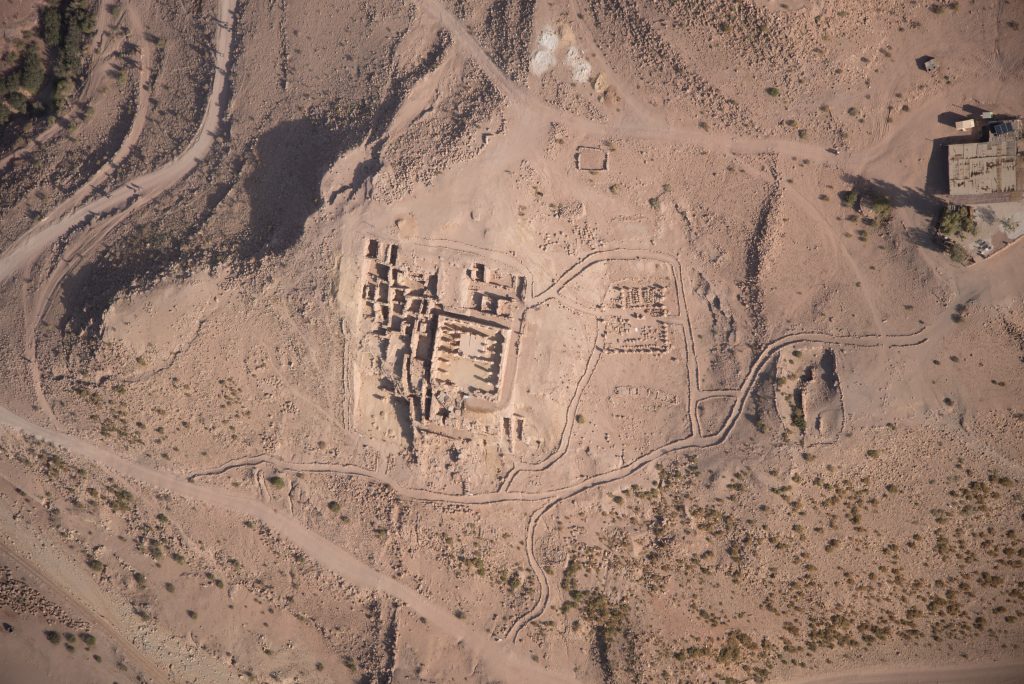
In partnership with the Department of Antiquities (DOA) of Jordan and the Petra Development and Tourism Regional Authority (PDTRA), and with substantial support from the U.S. Ambassador’s Fund for Cultural Preservation (AFCP, 2012-2016) and the USAID Sustainable Cultural Heritage Through Engagement of Local Communities Project (SCHEP, 2015-2018), ACOR has worked closely with members of the local community in and around Petra alongside specialists in conservation, geology, archaeology, and architecture, with the aim to document, preserve, and present the site to current and future generations. This short article focuses on site presentation through signage and pathways, and how this is helping visitors, tour guides, and educators better experience and understand the site and its history.
Prior to recent interventions, TWL was difficult for visitors to access due to a lack of clear pathways and exposure of architectural remains. The Cella (the inner sacred area of the complex) could only be reached by clambering over walls in front of the temple, leading to damage to the site. As with much of Petra at the time, there was very little or no information to help visitors interpret what they were seeing. Tour guides and guidebooks can also be vital interpretive tools for visitors, though not everyone has access to them when they visit Petra. The lack of signage was in part remedied with one sign added to the TWL site through a recent United Nations Development Programme (UNDP) intervention, as well as the Visit Petra mobile app which provides additional information about the site. Yet visitors still have fundamental challenges interpreting the site and what cannot be seen today. For example, the commonly asked question by visitors is: “Where are the winged lions?” The temple in its current setting had no intact or visible fragments of winged lions because these highly ornate pieces which once adorned the tops of capitals in the Cella are too small to be left on site, though there are future plans to produce an on-site replica.
So what about more dynamic ways to help interpret sites? Augmented Reality (AR) is a concept often discussed in terms of digital applications of visual content that can be used to overlay or interact with a real world environment and has been employed in heritage tourism settings. Just one example is the Römerstadt Carnuntum app. Such digital tools may well be employed at Petra in the future, yet it is noted that simple analog methods can also be effective. For example, at Heidentor, the ruined city gate at the entrance of Roman Carnuntum in Austria there is an AR glass sign with a reconstruction drawing lining up with the ancient ruins, allowing visitors to visualize this partially preserved structure. This formed the inspiration for an AR glass sign at TWL developed by Elena Ronza, Qais Tweissi, and Jehad Haron and produced by the Modern Advertising Center signage company in Amman under the direction of then ACOR Associate Director, Glenn Corbett. The sign, installed in 2017 as a follow up to a 2013 pilot project to partially restore the temple with faux column capitals (see ACOR Newsletter 25.2) presents a visualization of the inner sanctum of TWL along with imagery of a winged lion column capital. This provides visitors with a way to interpret the architectural space as an interplay between past and present, allowing them to see what is preserved and what was once present.
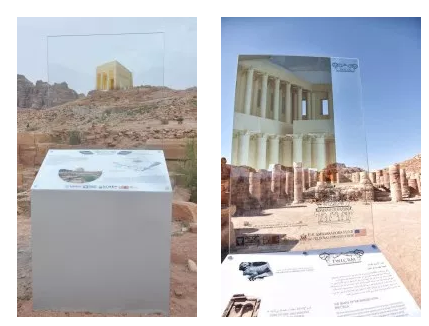
In Spring 2018, a series of new signs were installed to mark the end of our main program of site improvements through the SCHEP project. This included a second glass sign down on the Colonnaded Street, some distance from the site at a much lower level. It allows visitors to see the two story temple dramatically emerging from the hillside and further builds awareness of TWL for those passing through the “main drag” of Petra. The glass signage is still a pilot project, and it is unclear how long they will last. The first glass sign in the Cella was sadly damaged, though subsequently replaced thanks to AFCP support.
Another challenge for the signage design at the Temple of the Winged Lions is the plethora of diverse materials and styles already in use across Petra. For example, the Petra National Trust (PNT) installed a number of metal signs around two decades ago, some of which are still in use today. Durable wall-mounted metal signs, produced by Brown University, can be seen at the Great Temple in Petra. Signs made from printed ceramic tiles, produced during the USAID Siyaha project (2005–2008) have survived at some locations, with the fullest set extant at the Petra Church. Engraved aluminum signs produced through UNDP (2015–2016) may last longer but are expensive. A number of UNDP signs were substituted in 2018 with metal signs sponsored by Hyundai.

As there was no signage standard or template yet in place in Petra at the time the TWL signage was in development, it was determined that any new signs should be made from inexpensive materials to allow future changes once a template is created. This may take place as Petra’s future Integrated Management Plan is implemented (currently in development).
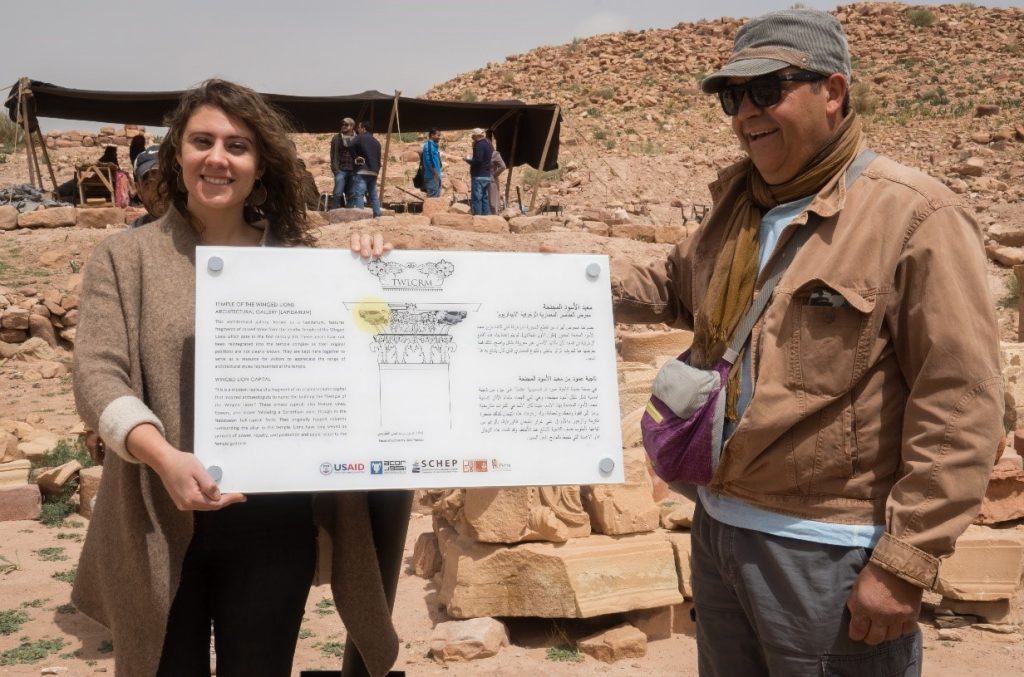
The current chosen design consists of a painted steel base with a single leg and frame that supports a lightweight label holder. The graphic panel (ca. 70 x 40 cm) takes the form of a reverse-printed sticker on a clear acrylic cover mounted onto the frame at each corner. This simple design allows for inexpensive reprints in the future, perhaps necessary every few years due to sun exposure. This may not seem that sustainable, but this was viewed as the best option until a future standard can be determined. Perhaps in the future, site signage production for Petra might be integrated into local, community-based initiatives, as is already the case at the site of Umm el Jimal. It is worth noting that similar site presentation initiatives are taking place at this and other SCHEP sites.
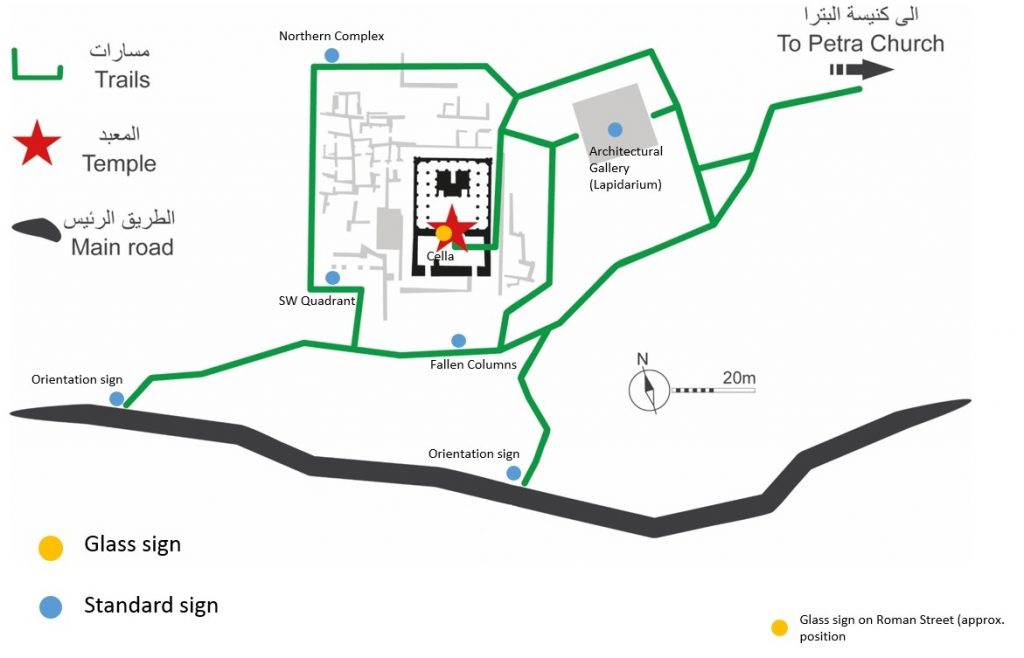
The six graphic panels present introductory information as well as key points around the site, including the Fallen Columns, the Southwest Quadrant, the Northern Complex, and the Architectural Gallery (Lapidarium). The panels also carry the logos of project partners and funders, providing recognition for the support and collaboration involved.
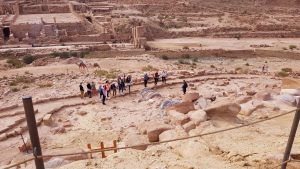
The panels present clear Arabic and English text accompanied by simple graphics aimed at engaging the visitor and indicating nearby visible features. The Fallen Columns panel, for example, allows visitors to relate the line of huge sandstone column drums on the ground in front of them with a reconstruction drawing showing the façade of the temple as it would have appeared in antiquity. In the Southwest Quadrant, a panel is positioned to allow the visualization of the supporting arches in this partially backfilled area, indicating the role that local community members played in preserving the site. In addition, simple wayfinding and warning signs have been created, encouraging visitors to stay on the paths (not always easy) and not to climb on the remains, particularly on the recently conserved temple podium.
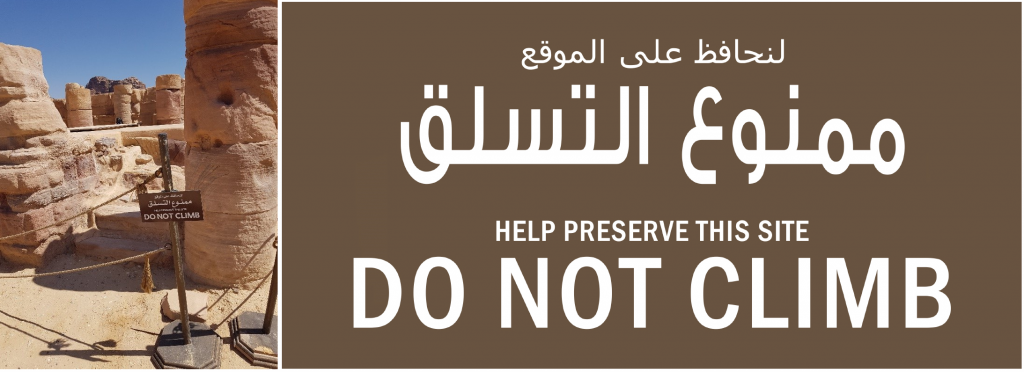
A review of the signage is ongoing. Initial observations suggest the signs are already serving an important role in informing visitors and tour guides. It is hoped that a future evaluation by Jordanian university students will be undertaken to ask visitors about their experiences. This in turn may be used to inform future positioning, design, and effectiveness of interpretative signage.
The site panels are presented here in pdf format online for ease of access and for educational use. We hope that this will be useful for anyone who wants to gain basic information about the site. Thanks to the all in what was a team effort, especially TWL team members, our partners at PDTRA and DOA, as well as funding provided by the AFCP and USAID.
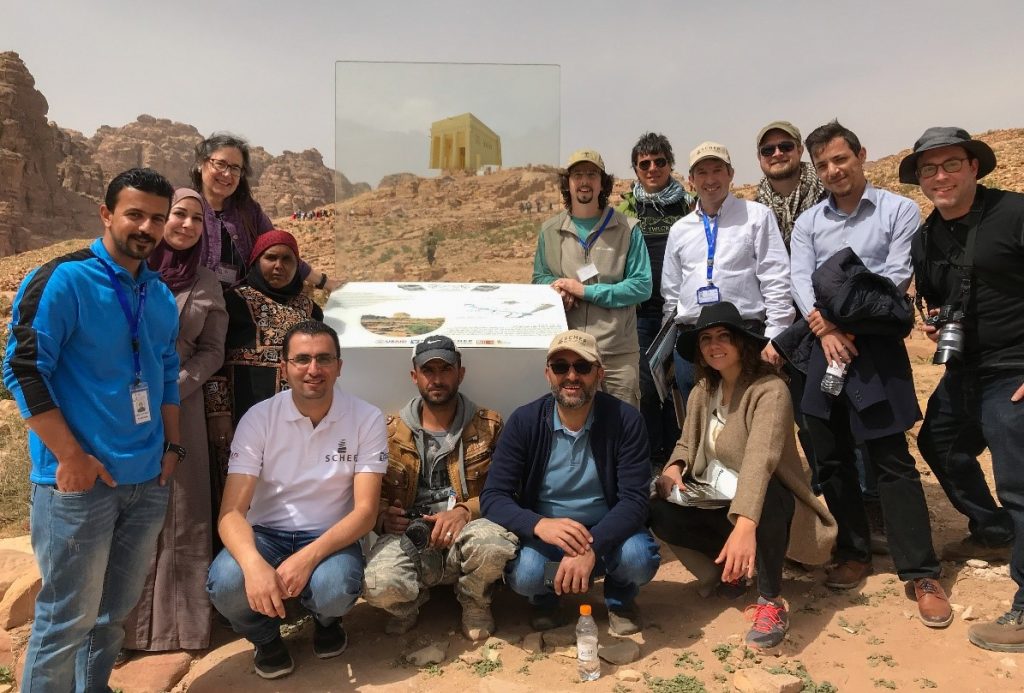
Acknowledgements. The text of the TWL panels was co-written and edited at different stages by Chris Tuttle, Glenn Corbett, and Jack Green, with editorial input from the Department of Antiquities, PDTRA, SCHEP team members, and TWL Site Stewards. Arabic translations were by Hanadi Taher of the Department of Antiquities. Graphics include artwork by Qais Tweissi and Chrysanthos Kanellopoulos. Design and layout was done by Miriam Saleh of ACOR and Abed al Ghareeb of ACOR and SCHEP.
By Jack Green
Please click here for more information about the author.
Learn more about the TWLCRM Initiative, and consider supporting ACOR’s ongoing, vital conservation work at the Temple of Winged Lions
